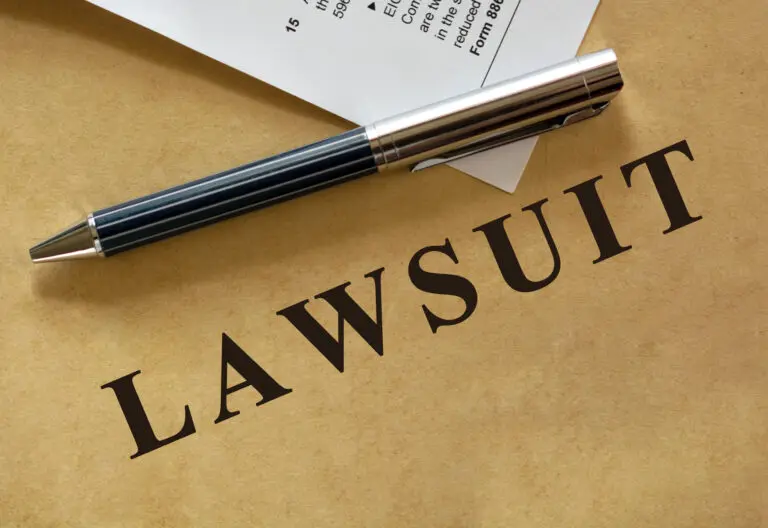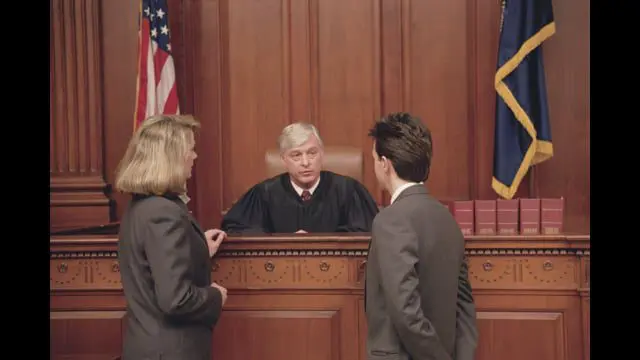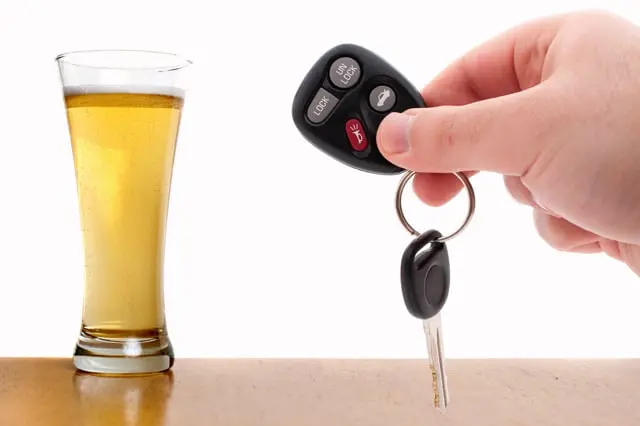Filing a lawsuit can be a daunting process, especially if you are unfamiliar with the legal system. However, understanding the necessary steps and legal requirements can make the process more manageable and increase your chances of a successful outcome. Whether you are filing a lawsuit for personal injury, breach of contract, or another legal issue, this guide will help you navigate the process with confidence.
Understanding the Basics of Filing a Lawsuit
The first step in filing a lawsuit is understanding the basics. A lawsuit begins when a plaintiff files a complaint with the court. This document outlines the plaintiff’s allegations and the legal basis for the lawsuit. The defendant then has an opportunity to respond to the complaint. The process involves several stages, including discovery, pre-trial motions, and possibly a trial.
Determining the Basis for Your Lawsuit
Before you file a lawsuit, you must determine the basis for your claim. Common reasons for filing a lawsuit include incumplimiento de contrato, personal injury, property disputes, and employment discrimination. Each type of lawsuit has specific legal requirements that must be met. For example, to file a personal injury lawsuit, you must prove that the defendant’s negligence caused your injuries.
In cases of employment discrimination, you must demonstrate that you were treated unfairly based on your race, gender, age, or another protected characteristic. Understanding the specific requirements for your type of lawsuit is crucial for building a strong case.
Choosing the Right Court
Choosing the right court to file your lawsuit is another important step. Lawsuits can be filed in state or federal court, depending on the nature of the case and the parties involved. Generally, state courts handle cases involving state laws, while federal courts handle cases involving federal laws or parties from different states.
For example, if you are filing a incumplimiento de contrato lawsuit involving parties from different states, you may need to file in federal court. On the other hand, if you are filing a personal injury lawsuit based on a car accident that occurred in your state, you would typically file in state court. Consulting with an attorney can help you determine the appropriate court for your case.
Preparing to File Your Lawsuit
Once you have determined the basis for your lawsuit and the appropriate court, the next step is preparing to file. This involves gathering evidence, drafting legal documents, and filing the necessary paperwork with the court.
Recopilación de pruebas
Gathering evidence is a critical part of preparing to file a lawsuit. The evidence you collect will support your claims and help prove your case in court. Depending on the nature of your lawsuit, evidence may include documents, photographs, witness statements, and expert testimony.
For example, in a personal injury lawsuit, you may need medical records, accident reports, and photographs of your injuries. In a incumplimiento de contrato case, you may need copies of the contract, correspondence between the parties, and financial records. Organizing and preserving your evidence is essential for building a strong case.
Drafting the Complaint
The complaint is the initial document filed in a lawsuit and serves as the foundation of your case. It outlines the facts of the case, the legal basis for your claims, and the relief you are seeking. Drafting a clear and concise complaint is crucial for effectively communicating your claims to the court and the defendant.
A well-drafted complaint should include the following elements:
- A statement of the facts that support your claims
- A description of the legal basis for your claims
- A request for relief, such as monetary damages or specific performance
If you are unsure how to draft a complaint, consulting with an attorney can provide valuable guidance and ensure that your document meets legal standards.
Filing the Complaint
Once your complaint is drafted, you must file it with the appropriate court. This involves submitting the document to the court clerk and paying the required filing fee. After the complaint is filed, the court will issue a summons, which is a document that notifies the defendant of the lawsuit and requires them to respond.
Serving the Defendant
After filing the complaint, the next step is serving the defendant. This means delivering a copy of the complaint and summons to the defendant, notifying them of the lawsuit and their obligation to respond.
Methods of Service
There are several methods for serving the defendant, including personal service, service by mail, and service by publication. Personal service involves delivering the documents directly to the defendant, while service by mail involves sending the documents via certified mail. Service by publication is used when the defendant cannot be located and involves publishing a notice of the lawsuit in a newspaper.
The method of service you use will depend on the specific rules of the court and the circumstances of your case. It is important to follow the court’s rules for service to ensure that the defendant is properly notified and the lawsuit can proceed.
Proof of Service
After serving the defendant, you must file proof of service with the court. This document verifies that the defendant has been properly served and includes details about how and when the service was completed. Proof of service is essential for demonstrating that the defendant has been notified of the lawsuit and their obligation to respond.
The Defendant’s Response
Once the acusado has been served, they have a limited amount of time to respond to the complaint. The defendant’s response may take the form of an answer, a motion to dismiss, or a counterclaim.
Answer
An answer is the defendant’s formal response to the complaint. In the answer, the defendant will address each of the plaintiff’s allegations and either admit, deny, or state that they lack sufficient information to admit or deny the allegations. The answer may also include affirmative defenses, which are legal reasons why the defendant should not be held liable.
Motion to Dismiss
A motion to dismiss is a request for the court to dismiss the lawsuit for specific reasons, such as lack of jurisdiction, failure to state a claim, or improper service. If the court grants the motion to dismiss, the lawsuit will be terminated. However, the plaintiff may have the opportunity to amend the complaint and refile the lawsuit.
Counterclaim
A counterclaim is a claim made by the defendant against the plaintiff. The counterclaim asserts that the plaintiff has harmed the defendant in some way and seeks relief from the court. The plaintiff must respond to the counterclaim, just as the defendant responded to the original complaint.
Descubrimiento
Descubrimiento is the process by which the parties gather information and evidence from each other to prepare for trial. Discovery allows both parties to fully understand the facts of the case and the evidence that will be presented at trial.
Types of Discovery
There are several types of discovery, including interrogatories, requests for production of documentos, requests for admissions, and depositions.
- Interrogatorios are written questions that one party sends to the other party, requiring written answers under oath.
- Requests for production of documents are requests for the other party to provide specific documents or records relevant to the case.
- Requests for admissions are statements that one party asks the other party to admit or deny in writing.
- Deposiciones are oral examinations of a party or witness, conducted under oath and recorded by a court reporter.
Managing Discovery
Managing the discovery process can be complex and time-consuming. It is important to carefully review and respond to discovery requests, as failure to comply can result in penalties or sanctions from the court. Working with an attorney can help ensure that you effectively manage the discovery process and gather the evidence needed to support your case.
Pre-Trial Motions
Before the trial begins, both parties may file pre-trial motions to address specific legal issues and set the parameters for the trial. Pre-trial motions can significantly impact the course of the lawsuit and the outcome of the trial.
Motion for Summary Judgment
A motion for summary judgment is a request for the court to rule in favor of the moving party without a trial, based on the evidence presented in discovery. The moving party argues that there are no genuine issues of material fact and that they are entitled to judgment as a matter of law. If the court grants the motion, the lawsuit will be resolved without a trial.
Motion in Limine
A motion in limine is a request for the court to exclude certain evidence from being presented at trial. The motion argues that the evidence is irrelevant, prejudicial, or otherwise inadmissible. If the court grants the motion, the evidence will not be allowed at trial.
Ensayo
If the lawsuit proceeds to ensayo, both parties will present their evidence and arguments to the judge or jury. The trial process involves several stages, including opening statements, presentation of evidence, witness testimony, cross-examination, and closing arguments.
Opening Statements
Opening statements are the initial remarks made by each party’s attorney, outlining the facts and legal issues of the case. The plaintiff’s attorney presents their case first, followed by the defendant’s attorney. Opening statements provide an overview of the evidence that will be presented and set the stage for the trial.
Presentation of Evidence
During the presentation of evidence, both parties have the opportunity to present documents, photographs, witness testimony, and expert opinions to support their claims. The plaintiff presents their evidence first, followed by the defendant. Each party has the opportunity to cross-examine the other party’s witnesses and challenge the evidence presented.
Closing Arguments
Closing arguments are the final remarks made by each party’s attorney, summarizing the evidence and arguments presented during the trial. The plaintiff’s attorney presents their closing argument first, followed by the defendant’s attorney. Closing arguments provide an opportunity for each party to persuade the judge or jury to rule in their favor.
Verdict and Judgment
After closing arguments, the judge or jury will deliberate and reach a veredicto. The verdict determines whether the defendant is liable and, if so, the amount of damages or other relief to be awarded. The court will then enter a judgment based on the verdict.
Post-Trial Motions
After the verdict, both parties may file post-trial motions to address specific legal issues or seek to alter the judgment. Common post-trial motions include motions for a new trial, motions to alter or amend the judgment, and motions for judgment notwithstanding the verdict.
Recursos
If either party is dissatisfied with the verdict or judgment, they may have the option to file an appeal. An appeal is a request for a higher court to review the case and determine whether legal errors were made that affected the outcome. The appeals process involves submitting written briefs and, in some cases, presenting oral arguments to the appellate court.
Grounds for Appeal
Common grounds for appeal include errors in the application of the law, procedural errors, and insufficient evidence to support the verdict. The appellate court will review the case and determine whether the trial court’s decision should be upheld, reversed, or remanded for further proceedings.
Conclusión
Filing a lawsuit involves several complex steps and legal requirements, from determining the basis for your claim and choosing the right court to gathering evidence, filing the complaint, and navigating the discovery process. Understanding your legal rights and the steps involved in filing a lawsuit can help you navigate the process with confidence and increase your chances of a successful outcome. Consulting with experienced attorneys and staying informed about your rights can effectively advocate for yourself and achieve fair and just results.
Key Features of Attorneys.Media:
- Educational Video Content: The platform demystifies complex legal concepts through video interviews, making it easier for individuals to grasp various aspects of the law.
- Expert Insights: Interviews with specialized lawyers provide in-depth understanding of legal processes, rights, and considerations in different contexts.
- Public Resource: Abogados.Media serves as a dynamic resource for those seeking legal information, catering to the growing preference for visual and auditory learning.
- Professional Visibility: For profesionales del derecho, the platform offers a unique opportunity to showcase expertise and engage with a broader audience, potentially expanding their client base.
- Broad Spectrum Coverage: The video interviews cover a wide range of legal topics, enhancing public knowledge about legal matters in Derecho Civil, Derecho penal y Otras cuestiones jurídicas.
Business Model:
- Educación pública: Enhancing the public’s understanding of legal issues and Comentario jurídico through accessible video content.
- Attorney Promotion: Providing attorneys with a platform to highlight their expertise and connect with potential clients. GET INTERVIEWED.
Unique Approach:
Abogados.Media represents a modern approach to legal education and consultation. It facilitates public knowledge of legal issues and connects individuals with local attorneys for consultations, promoting a better-informed society.
This unique combination of educational content and professional promotion positions Attorneys.Media as a valuable resource for both the general public and legal professionals.









